Common Running injuries
Is knee pain keeping you from running? back pain? Ankle pain? Is your next marathon around the corner, but you feel like you have to miss it? Maybe, you just want to force yourself through the pain. You have probably tried many things to decrease your pain while running; things like running less, changing your shoes and maybe even some sort of taping.
What you don’t know…
Most pain that comes along is usually by increased pressure and torque placed on your body for long periods of time, while the body has not been appropriately trained to take the load. The pressure increases with each wrong movement and that may be due to a series of issues. Strengthening is not the only factor when you start to look at the what may be affecting your pain and overall body mechanics. What people don’t know is that you can do as many glut/quad/ankle exercises as you want, but if we do not re-train the body to work correctly the faults in your movement will continue.
The nervous system is key…
Running is one hop after another. Whether you run for 1 mile, 2 miles or 26.1 miles, running is hopping one step at a time. When our body is not properly strengthened and trained to take the load, the body starts to break down. For example, test your calf raise. How does it look? Do you put excessive pressure on the outside of the foot and not the ball of the foot? Try stepping onto a box step, does your knee trail with your foot and your hip like a railroad track or does it collapse in? Most people have trouble with these simple movements and then go out and try to run a couple of miles or even a marathon. As a runner you need to make sure that you have the needed mobility and strength, yet retraining your body in a stable position so that your body “remembers” how to move properly.
It’s all in the hips…
Have you heard of the dreaded “clam” exercise? Do you keep doing them because you have been told they will get rid of your pain when running? Doing hip strengthening exercises like clams help, but you need to train your hips to move correctly when you run. With each hop, your knee may collapse in. This means that your gluteal muscles are not being optimally recruited causing your knee to cave in and in turn causing your ankle to collapse as well, all this is happening because your hips are weak. If you are unable to hold a running position in a single leg stance without losing your balance, how well will you be able to run? You need to properly strengthen your glutes, but also train them to kick in properly in order to have optimal body mechanics when running to avoid pain and injuries.
What about my back?
Your back hurts when you run? It’s the weak core! That’s what we always hear when we have back pain, whether it be running or lifting. Yes, the abs may be weak or what if they are just not used properly? If you run and your back hurts, take a look at how much curve is in your back. Does your low back extend too much? You need to be able to stabilize your pelvic area when running so that the pressure on your lower back is decreased. Learn what a posterior pelvic tilt is and implement it to your daily lifestyle. Most of us live with an extended back, causing our back to break down and be in pain. Decrease the excessive motion in the back, stabilize and engage the glutes!
My ankle hurts…
The ankle is one of the most complicated body parts ever made! We have 26 bones in the foot along with 30 different joints! Not to mention all the nerves that come down into the foot and may be easily irritated by inflammation, poor movement and tight muscles. The foot has many movements that must happen for it to work properly. The foot has an unlocking mechanism to absorb the shock and a locking mechanism to help you push off. If anything is off, this may mess with the mechanisms and cause pain. You need to make sure that you have optimal calf strength to push off, while also having control to decrease the pressure placed on the foot. Remember running with an injury is like driving your car across country with flat tires, you won’t get far and it will cost you more in the long run. The following exercises will help get you started in retraining your body.

Training your foot muscles and balance
Start with a tissue paper and then crumble it up into a ball.
You will go ahead and then put this right underneath the ball of the foot.
You will place the other foot backwards in a halfway lunge position and think about the balancing foot as a “tri-pod”. The foot must work by balancing equally through the front right corner, front left corner and heel of the foot. Your foot should feel as if it is doming around the tissue paper.
The goal would be to hold this position for 3 minutes and allow your foot to work as hard as possible.

Heel Raises:
We always see people performing this exercise, but they are usually performed incorrectly. When performing a heel raise, most of your pressure if not all should be along the ball of the foot/big toe. The heel raise should be appreciated more as an active individual as we run/hop throughout most of our activities
1)Attempt a heel raise with both feet and make sure you are not hanging out on the outside of the foot. Perform 20 for a 5 second hold in each one.
2) The raise should be slow and controlled to better optimize strength and efficiency.
3) You can progress to a single leg heel raise, but again make sure your heel goes up as high as possible and not stays half way. If your heel raise is off balance and not high enough go back to performing heel raises with both legs.
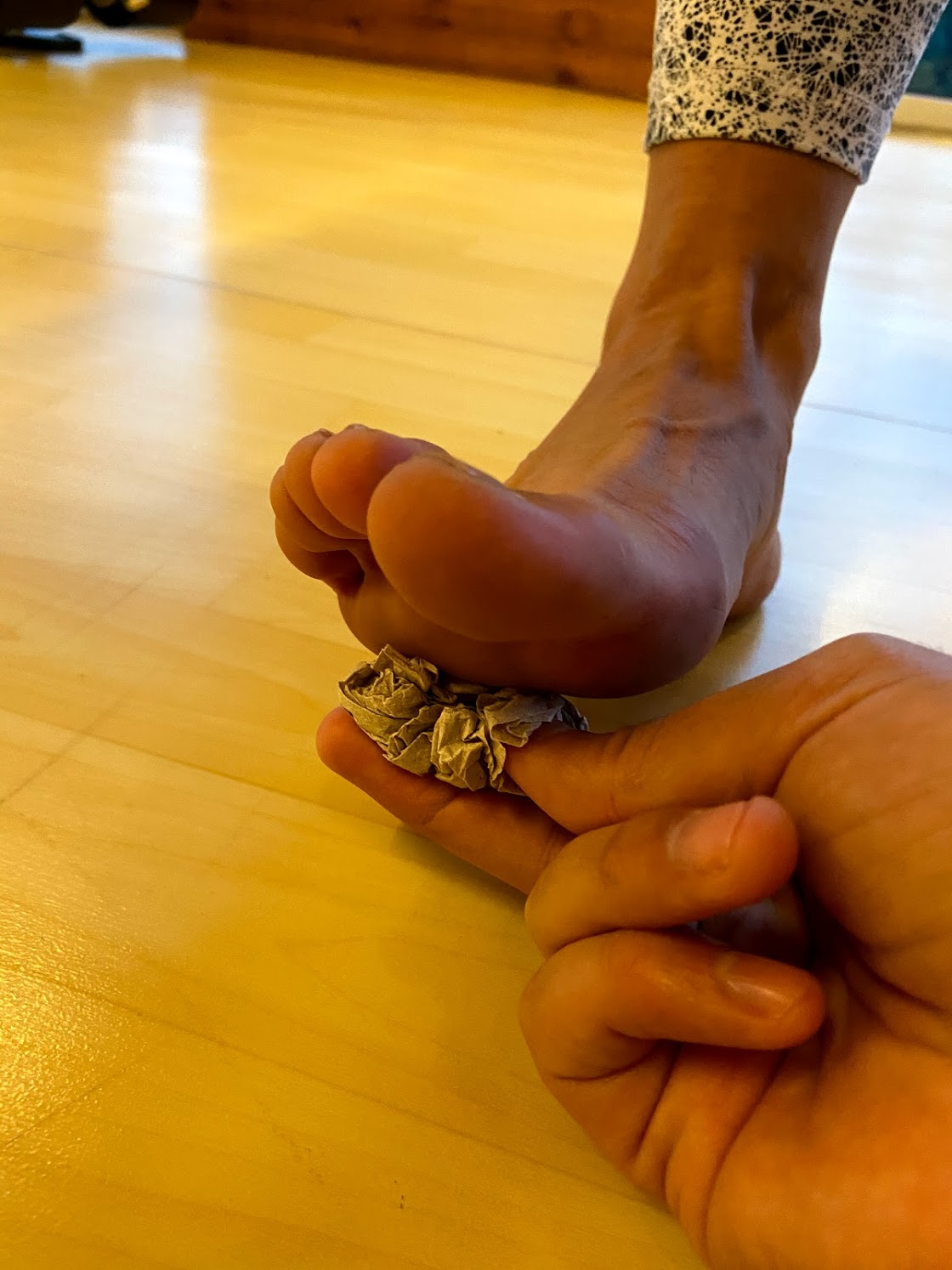
Golf Squat:
This exercise is great because you are literally working in a running stance. This exercise helps break down all muscles involved in running to better optimize your run efficiency. This exercise will work you core, hips and gluteal muscles while challenging your balance training.
1. Set up in a running stance.
2. Attempt to reach toward the ground while kicking your lifted leg back as if hinging at the hips (you may place a cone or ball to reach for if the ground is to low).
3. Return to the starting position and perform this exercise as slow and controlled as possible.
4. Try not to bring the lifted foot down to the ground and if you must to keep your balance only tip-toe the foot down. This makes the stance leg work as hard as possible through the performance of the exercise.
5. Perform 20-30 on each side.
****you can make it a bit more challenging by adding a rolled tissue paper underneath your foot as you did in the first exercise above*****
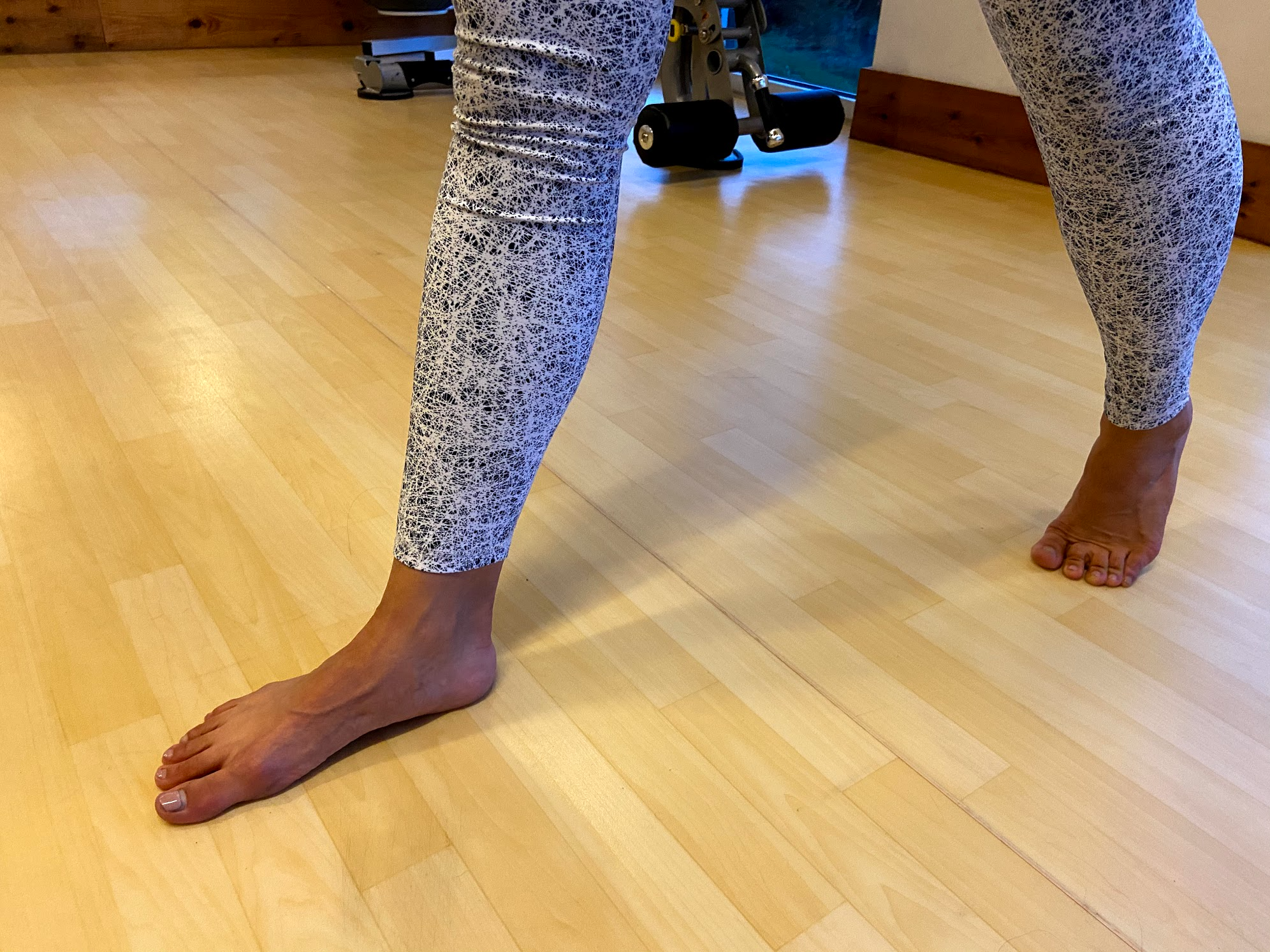

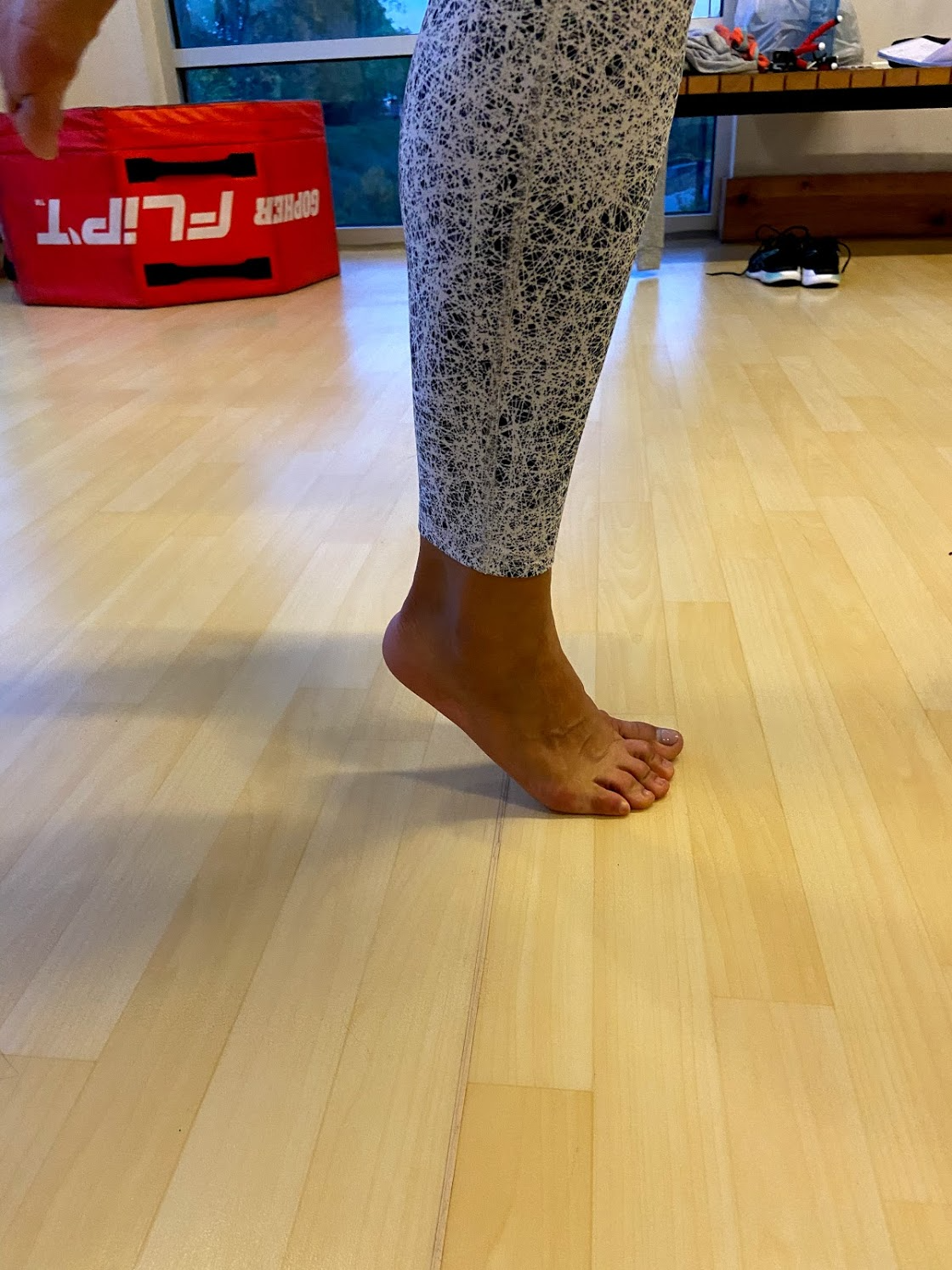


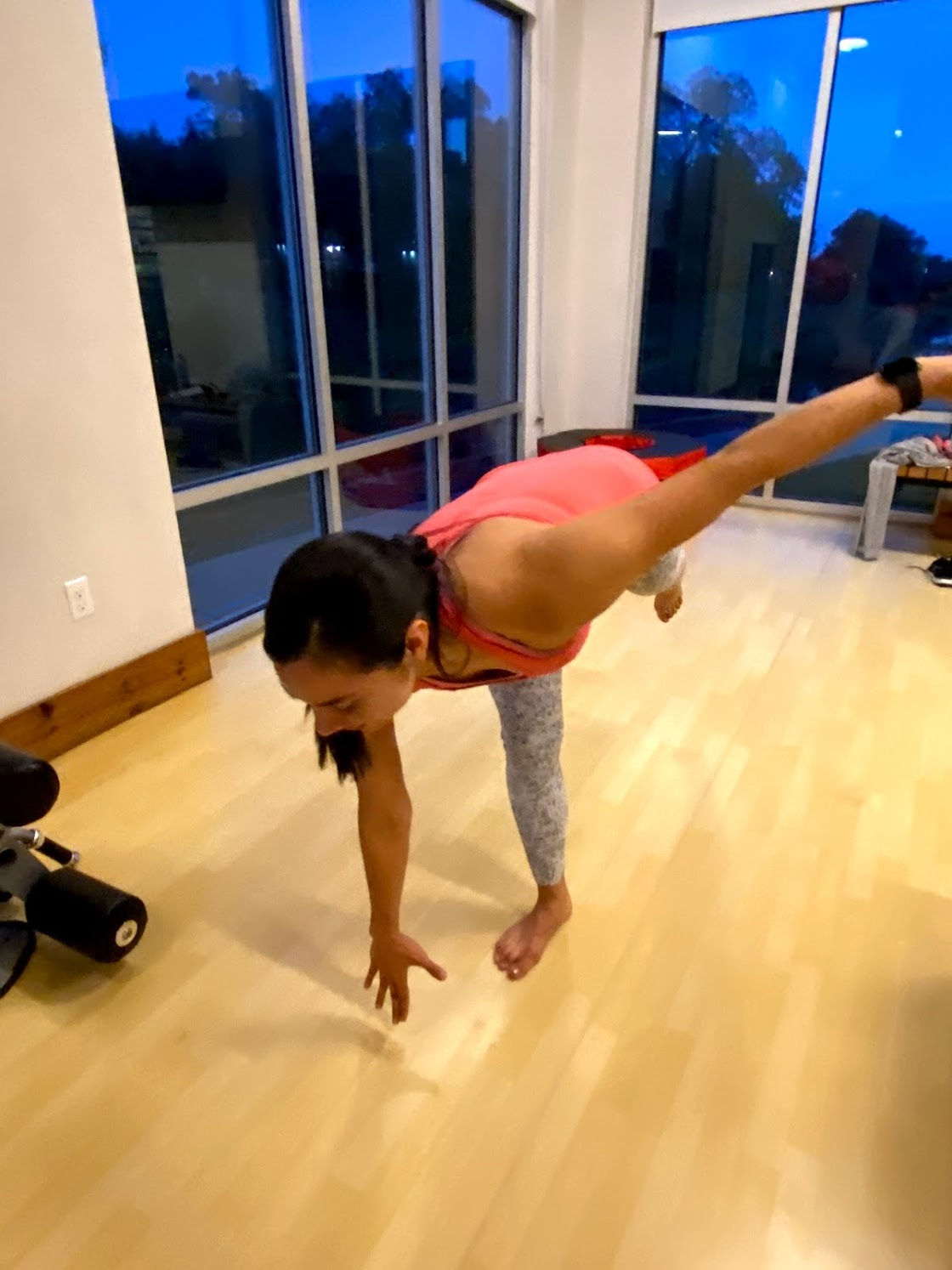
Step up:
The step up exercise is one of the most under appreciated exercises performed. The step up should be broken down and made sure it is being performed appropriately to avoid injury and excessive torque in the knee.
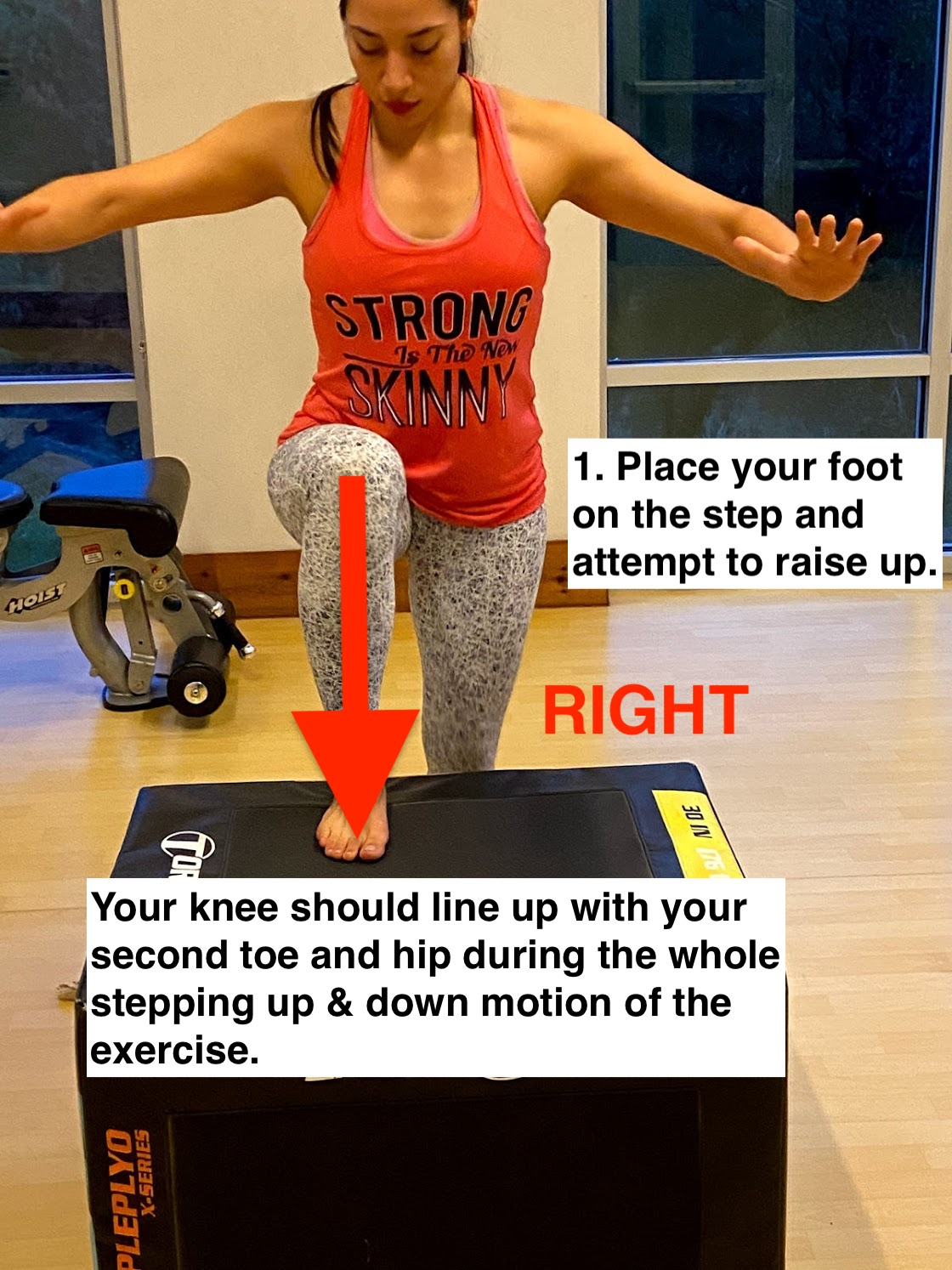

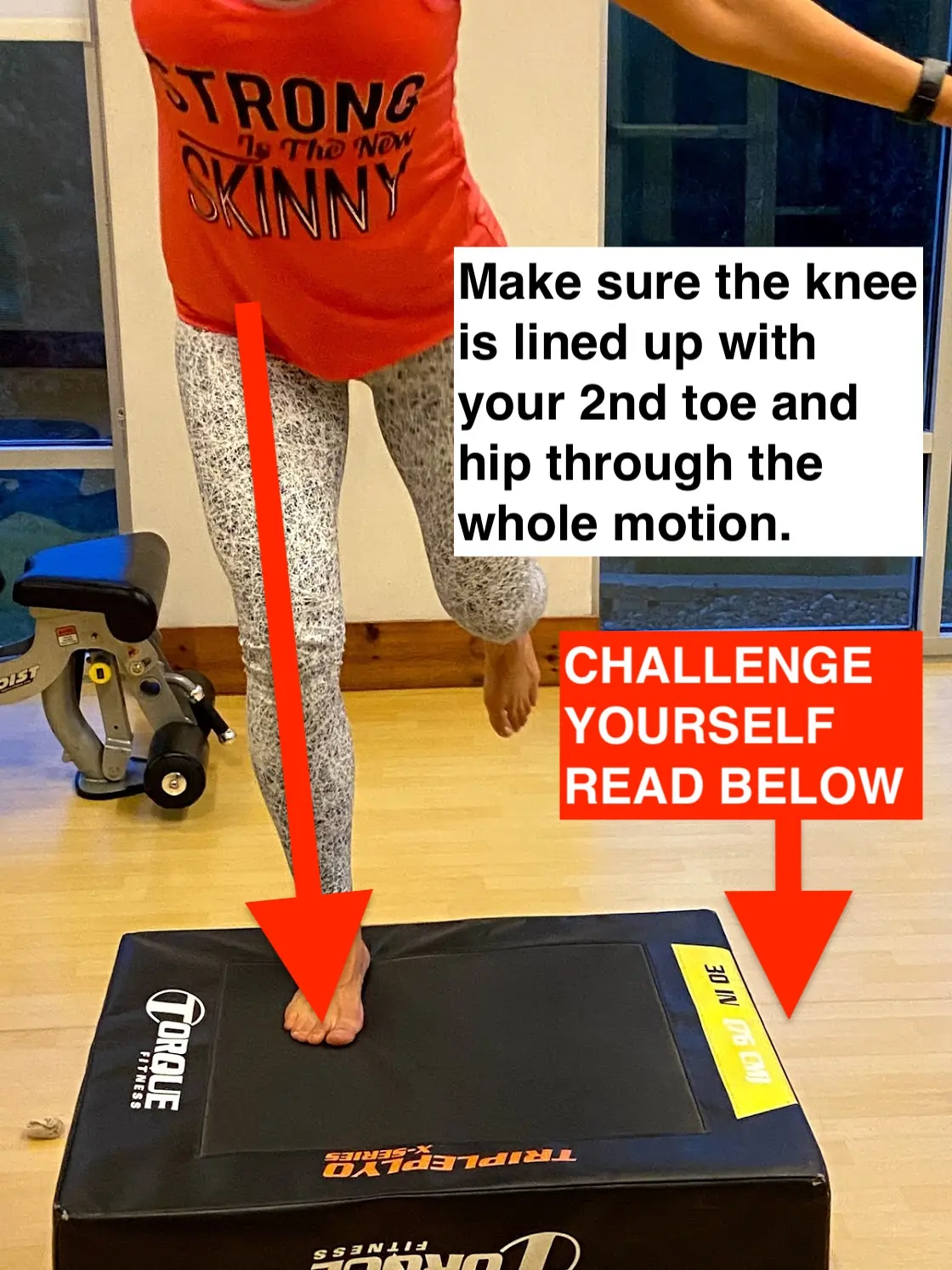
1. Place your foot on the step and attempt to raise up
2. MAKE SURE YOUR KNEE DOES NOT DIVE IN AS SEEN IN THE SECOND PICTURE. THIS INDICATES HIP WEAKNESS AND POOR CONTROL.
3. Your knee should line up with your second toe and hip just as the 3rd pic through the whole stepping up and down motion of the exercise.
*****challenge yourself even more so by stepping up and balancing on the one leg for 5 seconds as this will engage the whole body and improve overall stability*******
Perform 25 step ups on each side.
These exercises may seem easy by the meer look of them, but think about performing them appropriately and training your body as specific as possible. Whether you’re running, jumping or lifting mix up your training program and implement these exercises as specific as possible. Feel free to contact Positive Action for any further questions as necessary.


